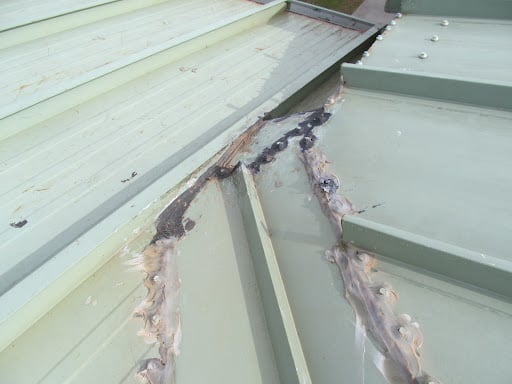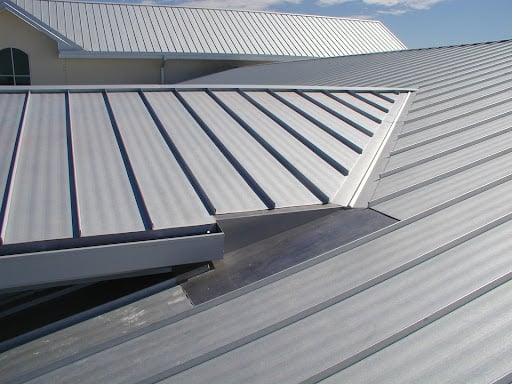Metal Roofing: Dead Valley Projects and Warranties
While not common for residential projects, commercial and architectural metal roofing projects often require a weathertightness warranty (WTW). In case you aren’t familiar with WTW warranties, they intend to provide building owners with peace of mind that their new standing seam metal roof remains leak-free for a specified period.
Most metal roofing manufacturers charge an additional fee for WTW warranties and require various steps before, during, and after construction to ensure the warranty is issued.
Once you start researching WTW warranties, you’ll quickly realize that while most reputable metal roofing manufacturers offer WTW warranties, the differences between what each offer (and require!) vary greatly. A condition known as dead valleys is an excellent example of these varying approaches.
The dead valley condition is challenging to flash during the initial installation, but it’s also challenging to keep the detail watertight throughout the roofing system's life. Consequently, some manufacturers exclude WTW coverage for dead valleys while others include the detail in their WTW warranty coverage.
By definition, a dead valley occurs when the end of the valley is on another roof plane instead of an eave.
While our discussion today focuses on metal roofing systems, it’s essential to realize the result of a dead valley condition is the same regardless of the roofing product utilized.
The image below shows a poorly designed dead valley condition. The photo illustrates multiple unsuccessful attempts to remediate the problem and make the condition watertight. The first problem is that water running down the valley lacks a well-designed exit path from the roof plane.
Additionally, this installation lacks a cricket to divert the water away from the male/female leg of the intersecting panel, which heightens the risk of water intrusion.

In contrast, consider the design and installation of the dead valley condition in the image below, and you’ll likely notice several differences.
- Water traveling down the valley has a well-defined exit path from the roof plane.
- The aluminum welded cricket helps protect the upper and lower panels from direct water intrusion.
- Water is diverted (or channeled) to a full-width panel for exit to the gutter.
- The aluminum cricket provides several feet of additional protection to the roof panel where the valley drains because this panel serves as a workhorse for the entire roofing system.

Given the risks mentioned above, many metal panel manufacturers exclude dead valleys from their WTW offering, while others offer coverage within specific parameters.
For example, at McElroy Metal, we offer coverage for dead valley conditions when a minimum of .063 aluminum welded cricket or diverter is utilized in the dead valley area, as the photo above illustrates.
McElroy Metal is proud to be one of the few companies willing to offer a WTW for dead valley conditions. Admittedly, this remedy carries an additional cost to the project; however, with our 57+ years of experience, we’ve learned that it's the only way to adequately address this design element.
Consequently, it’s imperative to talk with each panel manufacturer during the specification process to determine if coverage is provided for dead valley conditions and learn their requirements.
We understand that complete avoidance of dead valleys isn’t feasible. When you can’t avoid a dead valley condition, understand they require special consideration during the design and installation phase of the project.
Please contact us early in your project so we can help you address this condition and ensure the best possible outcome for you and your building owner.
Interested in learning more about WTWs? You may enjoy our earlier post, “Are Weathertightness Warranties Worth the Money?”
Or you can also check out our website to view the specifics of our WTW offering.
Tip: Don’t miss the FAQ sections at the bottom of the page to better understand WTW specifics for McElroy Metal.
About McElroy Metal
Since 1963, McElroy Metal has served the construction industry with quality products and excellent customer service. The employee-owned components manufacturer is headquartered in Bossier City, La., and has 14 manufacturing facilities across the United States. Quality, service and performance have been the cornerstone of McElroy Metal’s business philosophy and have contributed to the success of the company through the years. As a preferred service provider, these values will continue to be at the forefront of McElroy Metal’s model along with a strong focus on the customer.



.png?width=767&name=What%20to%20Expect%20When%20You%20Order%20From%20McElroy%20Metal%20(1).png)


.png?width=440&height=293&name=How%20to%20Install%20Metal%20Roofing%20Over%20Existing%20Metal%20Roofs%20(1).png)


Comments on this article:
Scroll down to the bottom to submit a comment and join the conversation. Need help or have a question? Please contact us. Looking for a distributor or contractor? Please click here to get started.